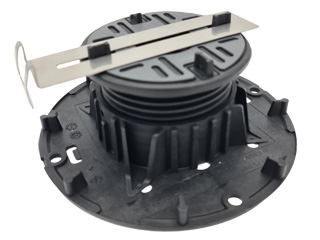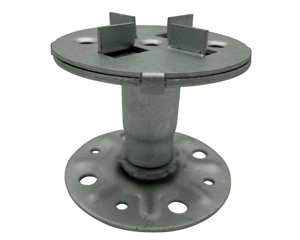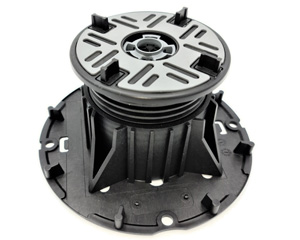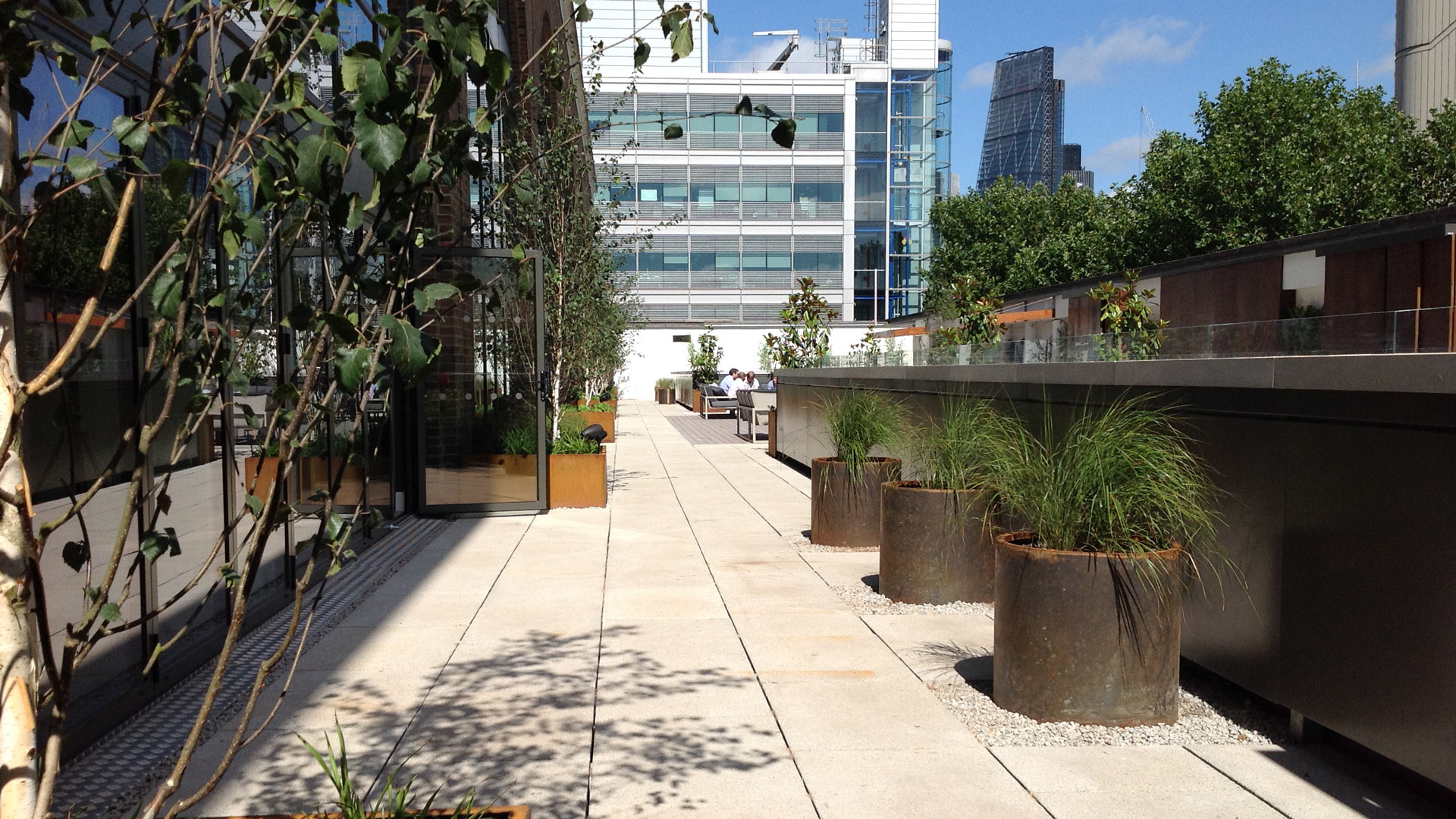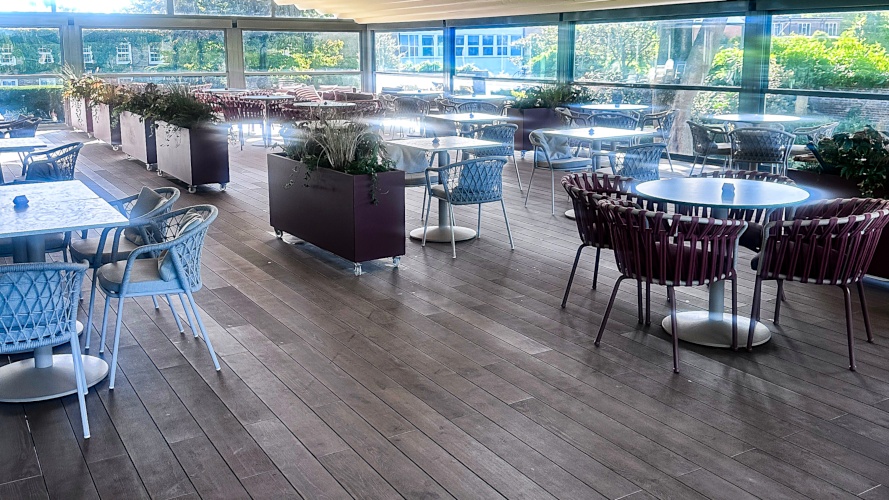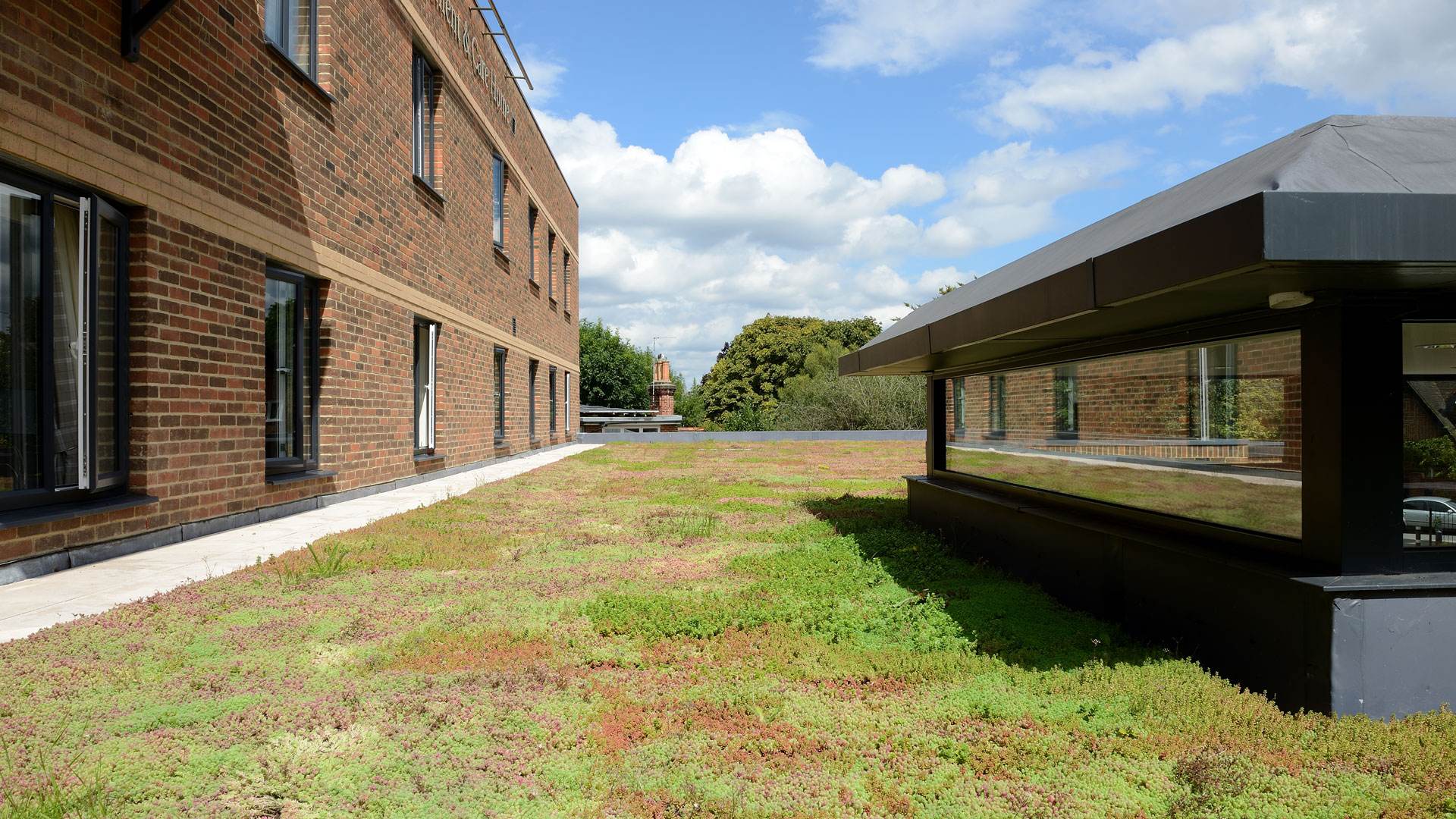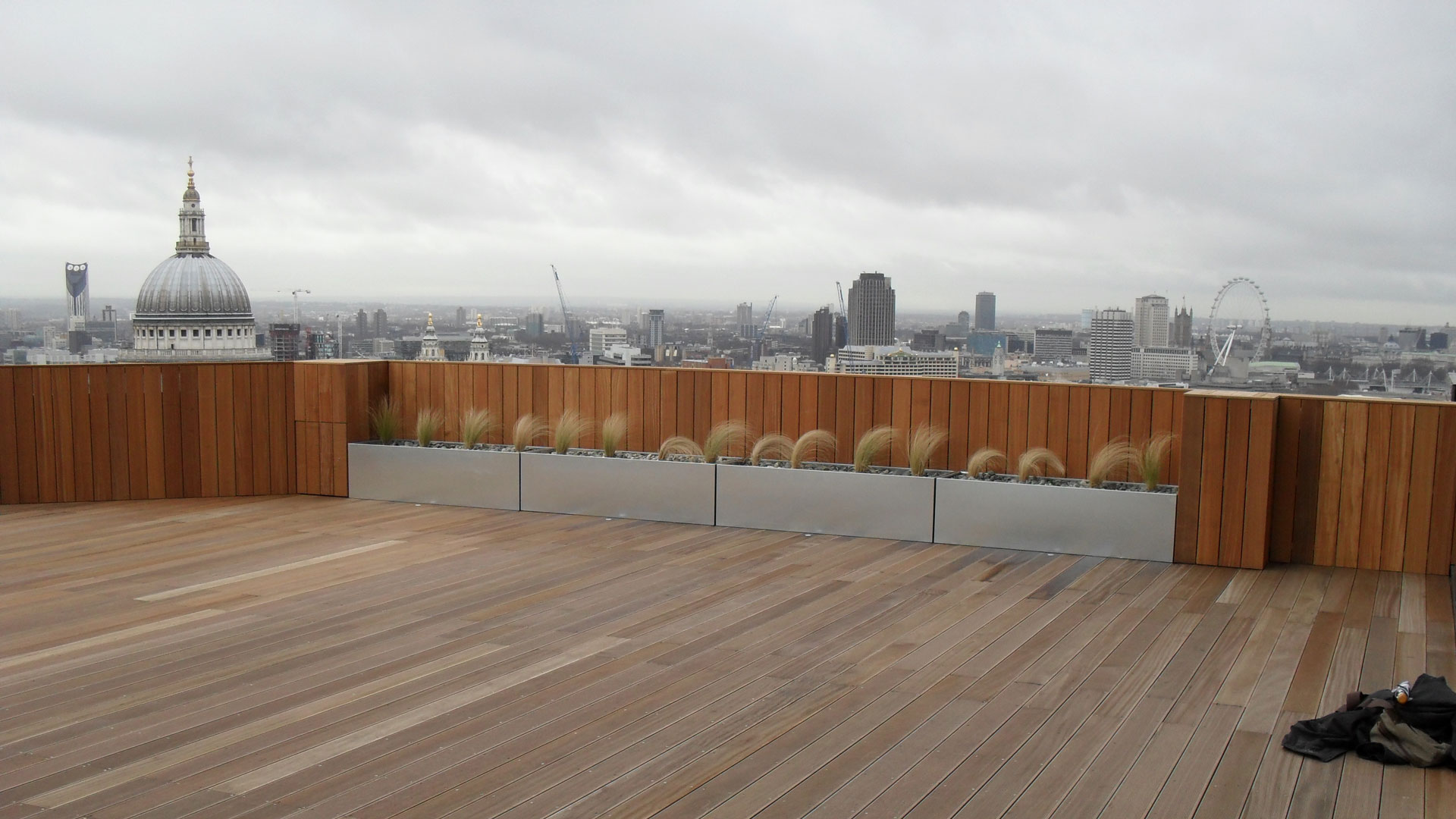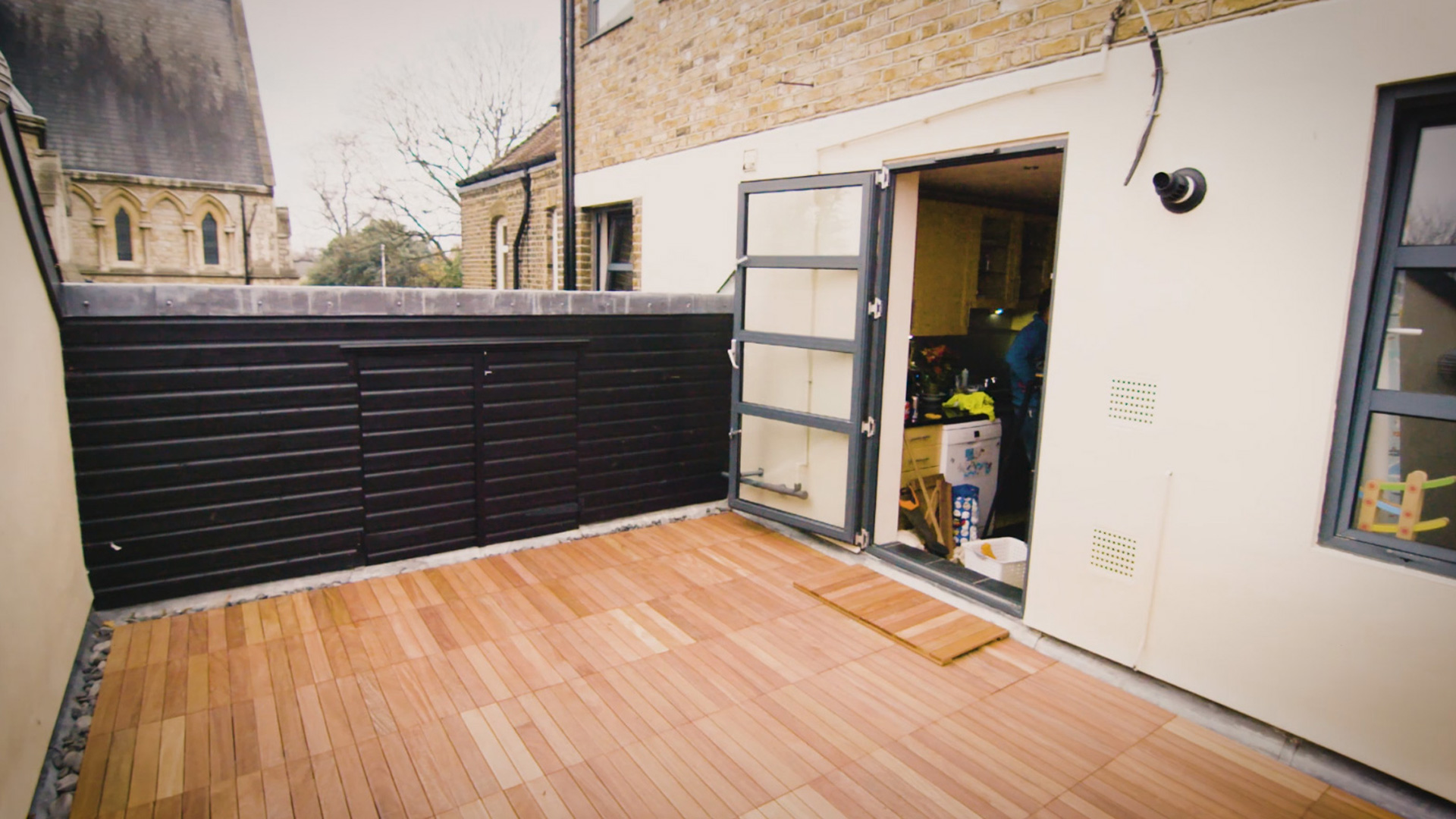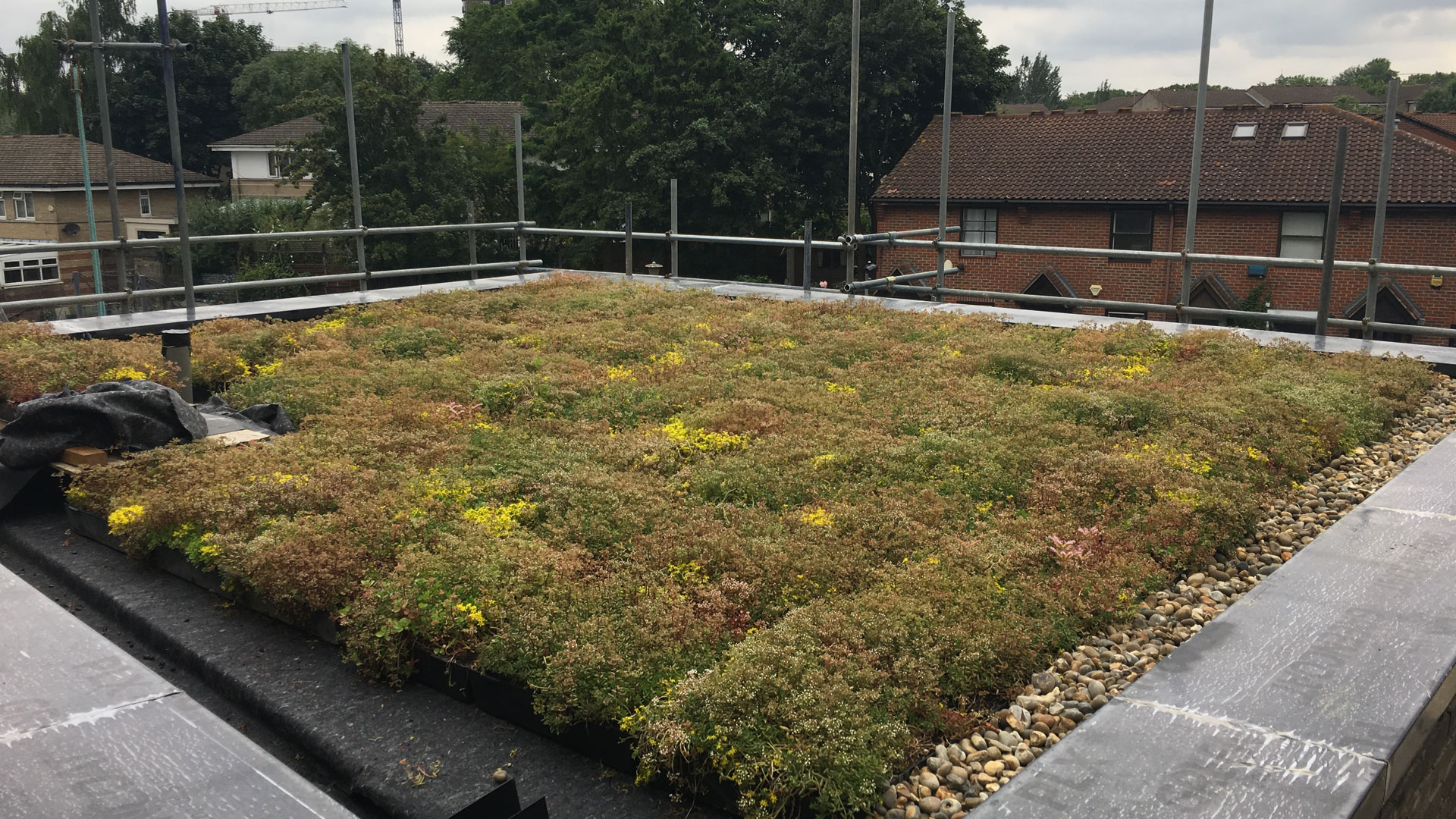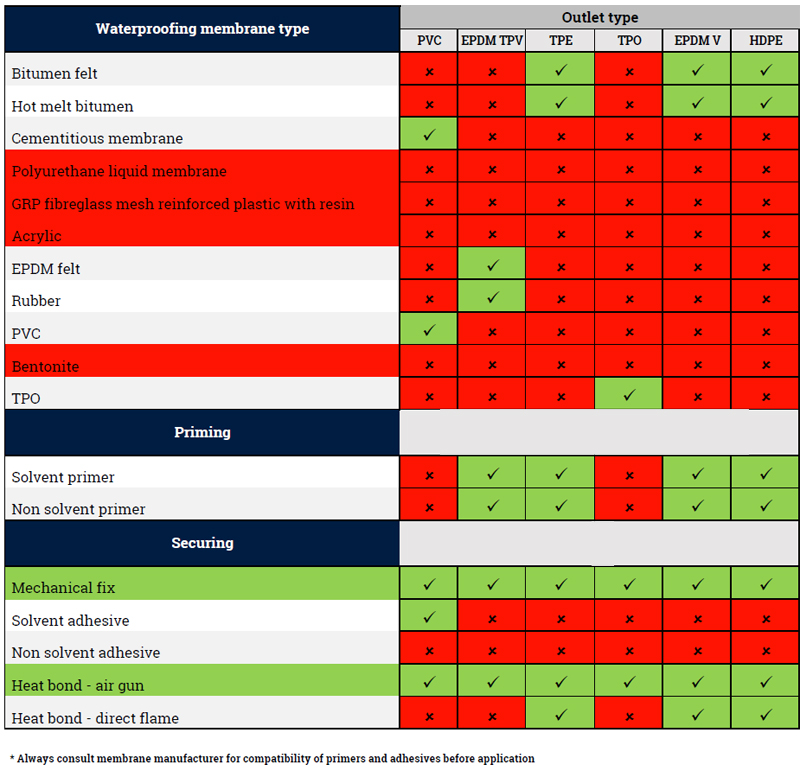Green roofs are a wonderful fusion of nature and architecture, bringing life, beauty, and biodiversity to what would otherwise be unused roof space. They can boost biodiversity, improve insulation, and help manage stormwater. Yet despite their many benefits, there are still common misconceptions about how green roofs work—especially when it comes to their upkeep.
One of the most persistent misconceptions is that once installed, a green roof will look after itself forever. This belief can lead to neglect, which ultimately shortens the life of the plants and reduces the roof’s visual and environmental benefits. At Wallbarn, we know from years of experience that a green roof is a living system—and like all living systems, it requires care.
Whether you choose the M-Tray® modular green roof system or opt for the M-Tray® Wildflower variation, understanding the natural growth cycles of your plants is vital to keeping your roof looking vibrant year after year.
Misconception 1: “Once it’s installed, you can forget about it.”
It’s easy to think of a green roof as a “fit and forget” solution, especially if you’ve opted for hardy sedum or a mix that includes drought-resistant plants. While sedum is remarkably resilient, and Wallbarn’s pre-grown M-Tray® modules arrive with more than 90% mature plant coverage, they still need regular checks to remain in top condition.
Wallbarn recommends carrying out maintenance two to four times a year for all green roof systems, with the exact frequency depending on the site’s exposure, surrounding vegetation, and local climate conditions. For example, a roof near trees may need more frequent weeding and clearing of leaves and twigs, while a more urban site might require less frequent but equally important checks.
A healthy maintenance schedule should include:
- Weeding: Removing invasive plants before they crowd out your sedum or wildflowers.
- Clearing debris: Ensuring that drains and gutters are unobstructed to prevent waterlogging.
- Fertilising: Applying a slow-release granular fertiliser, such as Vitax Q4, twice a year to keep plants vigorous.
- Gap filling: Planting cuttings or plug plants in bare patches to maintain full coverage.
- Irrigation checks: Making sure watering systems are functional, particularly before the hotter months.
Without this routine, a green roof’s coverage can thin out, weeds can take over, and the system can lose its aesthetic appeal and biodiversity value.
Misconception 2: “Wildflowers will bloom all year round.”
Wildflowers are a beautiful and important part of many green roofs, and form the basis of “biodiverse roofs” which are so favoured by planners. On a roof system like Wallbarn’s M-Tray® Wildflower, they create a stunning visual display and attract pollinators such as bees and butterflies. However, it is essential to understand their growth cycle.
Wildflowers are, in essence, spring and early summer bloomers. This is their natural rhythm: they come into their own as temperatures rise and daylight extends, producing bursts of colour and activity. Later in the year, they produce seeds and enter a period of dormancy. This cycle is normal and healthy—it mirrors how they grow in meadows.
During the months when wildflowers are not in bloom, they may appear less lush and the green roof will appear more bare and sparse, but this is not a sign of failure. Rather, it’s part of the seasonal ebb and flow. The important thing is to allow them to seed and regenerate naturally, which will help ensure a strong display in the following spring.
Misconception 3: “Sedum is just filler—it doesn’t need attention.”
Sedum is the backbone of many green roofs for a reason. It’s drought-tolerant, wind-resistant, and capable of thriving in shallow substrates with minimal water. Unlike wildflowers, sedum offers a longer blooming season, changing colour throughout the year and providing structure and coverage even outside peak flowering times.
However, while sedum is low-maintenance, it isn’t maintenance-free. Prolonged drought, nutrient depletion, or heavy weed growth can still impact its health. Even sedum will benefit from seasonal fertilisation and occasional irrigation during extended dry spells—particularly if no significant rainfall occurs for around two weeks.
Sedum also plays a role in helping to stabilise the substrate and prevent erosion, meaning it supports the overall health of the green roof ecosystem.
Misconception 4: “Modular green roofs don’t need the same care as other variations.”
The M-Tray® modular system is designed to make installation, inspection, and maintenance easier. Each pre-grown tray clips together, creating a seamless carpet of vegetation that can be quickly lifted if you need to inspect the waterproofing beneath. While this convenience reduces the complexity of repairs and seasonal work, it does not remove the need for regular upkeep.
In fact, the modular format makes it even simpler to carry out seasonal care, as you can work on specific areas without disturbing the entire roof. This means there’s no excuse to leave maintenance undone.
Seasonal Care: A Green Roof Calendar
Maintaining your Wallbarn green roof can be broken down into straightforward seasonal tasks:
Spring
- Remove winter debris and any dead plant matter.
- Hand-weed to remove any aggressive plants.
- Fertilise with a slow-release granular feed.
- Over-seed or plug-plant bare areas.
- Check irrigation systems and ensure drainage is clear.
Summer
- Monitor for signs of drought stress, such as reddening sedum leaves.
- Water during prolonged dry spells, particularly if rainfall has been absent for two weeks or more.
- Remove weeds before they flower and spread.
Autumn
- Remove fallen leaves and plant debris to prevent water blockages.
- Fertilise again to strengthen plants for winter.
- Plug plant bare patches if needed.
- Drain and shut down irrigation systems before frost.
Winter
- Carry out visual checks for any damage.
- Remove debris after storms.
- Avoid walking on the roof when frozen or waterlogged.
By sticking to this simple plan, you give your green roof the best chance to extend its life and vibrancy for many years.
Why Maintenance Matters Beyond Appearance
A well-maintained green roof isn’t just more attractive—it also performs better in all the ways that matter most. Proper care:
- Maintains the roof’s insulating properties.
- Ensures rainwater is absorbed and slowed before reaching drains.
- Supports healthy biodiversity, attracting pollinators and providing habitat.
- Reduces the risk of plant loss and costly replacements.
Neglect, on the other hand, can result in bare patches, reduced performance, and the need for expensive remedial work.
Why Wallbarn’s M-Tray® is the Smarter Choice
The M-Tray® system has been developed to make owning a green roof as practical as possible. The trays are pre-grown for nine to twelve months before delivery, meaning you start with a roof that’s already lush and well-established. The click-together design ensures there are no visible seams, and the integrated drainage and water retention features keep plants healthy.
The M-Tray® Wildflower option enhances biodiversity, providing a seasonal burst of colour and ecological value in the spring and early summer. Combined with sedum for all-season structure, this mix offers the best of both worlds.
Because the trays are removable, inspections and repairs are far simpler than with traditional built-in green roofs. This means you can keep on top of your maintenance with minimal disruption.
Final Thoughts: Green Roofs Are Living Systems
Perhaps the most important point to remember is this: a green roof is alive. The plants will grow, flower, seed, and rest according to natural cycles. They respond to weather, water, and nutrients. If ignored completely, their condition will eventually deteriorate.
With Wallbarn’s M-Tray® systems, you have the advantage of a carefully designed, pre-grown, modular solution that makes maintenance straightforward. But maintenance must still be part of the plan.
Green roofs reward attention. Spend a few hours each season caring for them, and they’ll repay you with vibrant colour, healthy growth, and all the environmental benefits they were designed to deliver.


